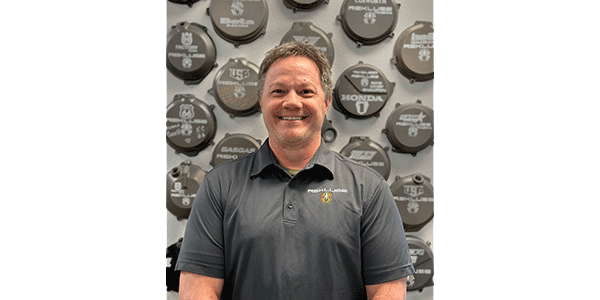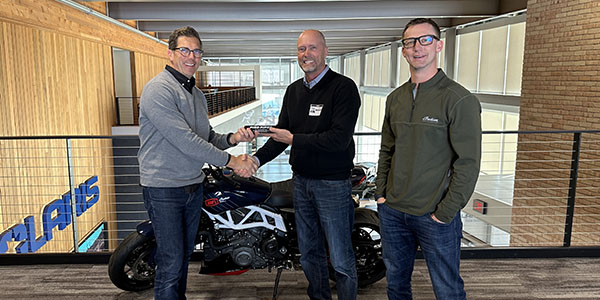the early 1990s, Kristine Komar created the San Bernardino National Forest Service Assocation to help the forest’s tightly-stretched staff and budget deal efficiently with the steadily increasing number of visitors. She partnered with Gene Zimmerman of the SBNF in order to train and recruit forest service volunteers that could give the forest enough people-power to efficiently handle the visitors.
That program was a tremendous success, and it now has five different programs that employ more than 20 staff members who manage thousands of volunteers who educate kids on the environment, spot fires from lookout towers, stage festivals, train the public and more.
In 1993, Greg Hoffman was brought on to the national forest staff to translate Komar’s vision to the OHV world. The long-term goal was to have 200 volunteers on the trails in ATVs, motorcycles and trucks, doing everything from trail maintenance to patrols. The vehicles could do more than just service the trails — their ability to access the most remote parts of the forest quickly would allow them to be the eyes and ears of all the forest services.
Hoffman believed in the mission of the program, but had concerns about how he could recruit people with enough training and personal responsibility to deal with the challenges presented by the weather, geography and the occasionally difficult visitors.
“I’ve been the leader on the Forest Service since the beginning,” Hoffman said. “I had to come up with a way to have 200 volunteers out there and still sleep at night. I tailored the program so that I could know there was good people out there.”
Thanks to a stringent training process, Hoffman sleeps just fine. He requires new recruits to log 50 to 60 hours on the trails and in the classroom in order to become full-fledged radio-toting trail volunteer. Hoffman said that those who make it through the process are first-class additions to the Forest Service staff.
Hoffman’s vision was to have these OHV volunteers out patrolling the trails in order to offer guidance, advice and assistance to OHV users. The volunteers would not be able to write citations, but they would be equipped with radios so that they could call in the local authorities if the situation required it. These people became the eyes and ears of the Forest Service.
“We have had our volunteers report on homicides, act as first responders to wild land fires, and work with other agencies such as the sherriff’s department, fish and game, and the California Highway Patrol,” Hoffman said.
A handful of volunteers worked with Greg in the early days, and they focused on building and maintaining as well as patrolling the trail system. Everything was done by hand, and trails were cut with pickaxes, sweat and explosives. All of the work was done out of a tiny shed, but Hoffman had a vision for more.
“In 1993, all we had was a shed,” Hoffman said. “The shed is still here. It could hold four motorcycles, and that was it. It was my goal to expand out and have an OHV volunteer outpost on all five ranger districts,” he said. “It was an uphill battle and each outpost was a fight. Today, we have one in Lake Arrowhead and four more in the forest. Volunteers can stop in and
pick up what they need. Four offer ATVs and motorcycles for the volunteers.”
Under Hoffman’s direction, the program recruited about 60 volunteers in the first year. By 2000, he had 200 volunteers working. Today, more than 300 OHV volunteers work out of five locations. The volunteers put in about 25,000 combined hours each year patrolling and maintaining the trails. They pick up 6,000 pounds of trash and put out more than 100 untended fires.
The volunteers also make contact with thousands of visitors each year. One of the things that both volunteers and managers stress is that they are ambassadors for the sport.
“We train our volunteers to be very dynamic,” Hoffman said. “They are educating our public, whether it be hunters, ATV, motorcycle or all the above.”
Volunteers are often the first on the scene for emergency situations that range from lost and missing forest visitors to fires, crimes and hostile campers. In order to learn how to handle these situations, volunteers go through a rigorous training process.
“It’s wonderful because we put these volunteers through extensive training,” Hoffman said. “Each one of them is an individual resource for dispatchers. They are trained to operate forest radios and operate as incident commanders.”
The volunteers receive training in visitor contact, radio procedures, back country navigation with maps and GPS systems, first aid (including CPR), patrol duties, and vehicle safety training for 4x4s, motorcycles and ATVs.
One of the key training programs is “Scenario Training,” in which people are put into live situations with other volunteers in which they have to make critical decisions. These are done with volunteers who pose as troublesome off-road riders, wounded campers or dangerous criminals. The trainees are sent into these situations and have to use all of their experience to not only get the proper authorities on the scene but also to properly deal with the people on the scene.
In the case of hostile campers, for example, trail volunteers are instructed to keep their partner in plain sight, back out of the situation as calmly and carefully as possible and radio for help.
That’s all part of the basic training needed to wear the “Forest Service Volunteer” vest and back patch. Once you are certified, you can go out and deal with the public on a regular basis. Volunteers can also choose to get more advanced training on ATVs or motorcycles. This type of certification attracts the riders who live for the worst conditions the mountains can dish out. Hoffman likes to refer to these people as 5150s — a term used by the state of California to refer to people who are a danger to themselves (Van Halen also used this term as an album title).
“We always seem to attract an element of 5150,” Hoffman said. “We always have our little faction of people who like to ride motorcycles in the ice and snow. These people typically laugh when they crash.”
The advanced training involves operating an ATV or motorcycle for 12 hours on the most difficult trails of the forest in the worst possible conditions. Volunteer safety is the first priority, and rides are cancelled if conditions are too dangerous.
“We had one that was about a 14-hour ride on motorcycles,” Hoffman said. “We rode about 180 miles that day, and all black diamond. We had to limp three of the ten motorcycles back. Two wouldn’t run anymore.”
He says that the hardest part of the training typically has nothing to do with rider competence or confidence. The trick is to get the individualistic riders to think of themselves as part of a team.
“They are so full of testosterone that we can’t get them calmed down,” Greg said. “The challenge has very little to do with themselves, all to do with teamwork. The pact is you are going to leave as a group and come back as a group. Then we leave and it’s absolute hell. Boulders and rocks all day long.”
That kind of adversity typically creates strong bonds, and the rigorous training has enabled volunteers to provide assistance to forest visitors during heavy snowstorms, fires and tragedies.
Some volunteers join for a love of the forest, and others join because they love to ride. And others are out there because for the community aspect. Several volunteers described the group they ride with as family, and others are literally father-daughter and other inter-family groups.
“I work in the mountains with some of the best people I’ve ever known,” project coordinator Travis Mason said. “I love my job.”
Forest Service Volunteers make keeping the trails within the forest open possible, and help ensure that off-roading continues to be a part of our world. Simply put, the extensive trail network of the forest service could not exist without the efforts of the volunteers.
One of the challenges faced by the program is that a small percentage of the public makes things difficult. “They are shooting signs, driving cross-country and pulling up fences,” Hoffman said. “God knows the public is out there.”
“It really is a bonanza to have people ready and willing to go out and patrol our trails,” he said.













